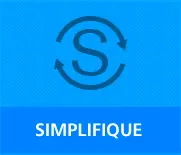Art festival blends artificial, human intelligence in São Paulo

An unrelenting crowd-puller since 2000, the Electronic Language International Festival (FILE) kicked off in São Paulo on Wednesday (Jul. 5) with the world’s hottest novelties in electronic art as cutting-edge artworks challenge the real world and the realm of technology.

This year’s theme—Interactive Singularities—focuses on the interplay between artificial and human intelligence in the creation of a new form of consciousness.
“A lot of people fear that AI might take over the world. In actuality, what AI needs is to work alongside humans. When these two cognitive forces come together, evolution and production go up through the roof. Some pieces here in the exhibit are AI-powered. Artists may build the system into the machine, but it’s the interaction with visitors that feeds content into it,” FILE co-founder, curator, and organizer Paula Perissinotto told Agência Brasil.
“AI can process and organize data in a much broader way than humans can. On the other hand, it comes deprived of emotion, creativity, and sensitivity. It’s when these two are combined that the power of this connection is brought to its full potential” Perissinotto went on to argue.
FILE São Paulo 2023 features works by artists from 39 countries. Among them is the piece that welcomes festival goers, installed outside the Federation of Industries of São Paulo State (Fiesp) Cultural Center, on Paulista avenue: a huge waterfall with led lights. Entitled Light Falls, the five-meter-high piece is signed by Brazilian artist Vigas and urges us to reflect on the role of water and nature preservation.
“It’s a large installation in the shape of a waterfall built with digital leds and translucent tubes. It’s a tribute to one of nature’s greatest assets, water. What I’m bringing to the city is water in one of its most powerful formats, the waterfall. At first its appeal lies in its beauty, but the concept shifts our gaze toward how we should preserve this precious resource and how we’ve been treating it,” Vigas said.
Also powerful is Empreintes Sonores, by Canadian duo Victor Drouin-Trempe (V.ICTOR) and Jean-Philippe Côté (Djip.Co). Here, visitors can either move in front of it or speak into a microphone for a visual rendition.
“Essentially, we’re trying to reverse our usual relationship with sound. Sound usually comes toward us, as it wafts through the air while we don’t have to move, but here the sound is frozen in the air and we’re the ones that need to move to explore it,” Jean-Philippe Côté explained to Agência Brasil.
Expanded Iris, by Brazilian Anaisa Franco, invites the public to look through an object the artist calls “a space iriscope.” The device scans the person’s iris and blends it with galaxies and nebulae in a projection. “The artist proposes the capture of the iris, bringing it into fusion with images of galaxies for contemplation,” the curator explained.
In Captured, by Finnish artist Hanna Haaslahti, the visitor’s face is captured and turned into a digital avatar in a virtual world. “You don’t have to manipulate anything or move. You just walk in front of a camera so your face is captured and you can be part of a network of people interacting with each other, bring to the fore all these issues inherent to human relationships,” she said.
Art within, art without
In addition to the installations inside the Cultural Center, the festival is projecting a series of augmented reality images through QR codes on the walls of the Trianon-Masp subway station, next to the festival building.
Also outside, led images will be projected on the Fiesp building until August 27, when the event is slated to end. The intervention will be visible to anyone on Avenida paulista at night. Some of these are part of the series Cotidianos Imperceptíveis (“Imperceptible Everyday Lives”), a collab between FILE and the Visual Arts program of the University of São Paulo (USP).



Dê sua opinião sobre a qualidade do conteúdo que você acessou.
Escolha sua manifestação em apenas um clique.
Você será direcionado(a) para o sistema Fala.BR, mas é com a EBC que estará dialogando. O Fala.BR é uma plataforma de comunicação da sociedade com a administração pública, por meio das Ouvidorias.
Sua opinião ajuda a EBC a melhorar os serviços e conteúdos ofertados ao cidadão. Por isso, não se esqueça de incluir na sua mensagem o link do conteúdo alvo de sua manifestação.
Clique aqui para mais informações sobre a Ouvidoria da EBC.








